Amazing International Fashions Integrated with Traditional Chinese Cultural Elements
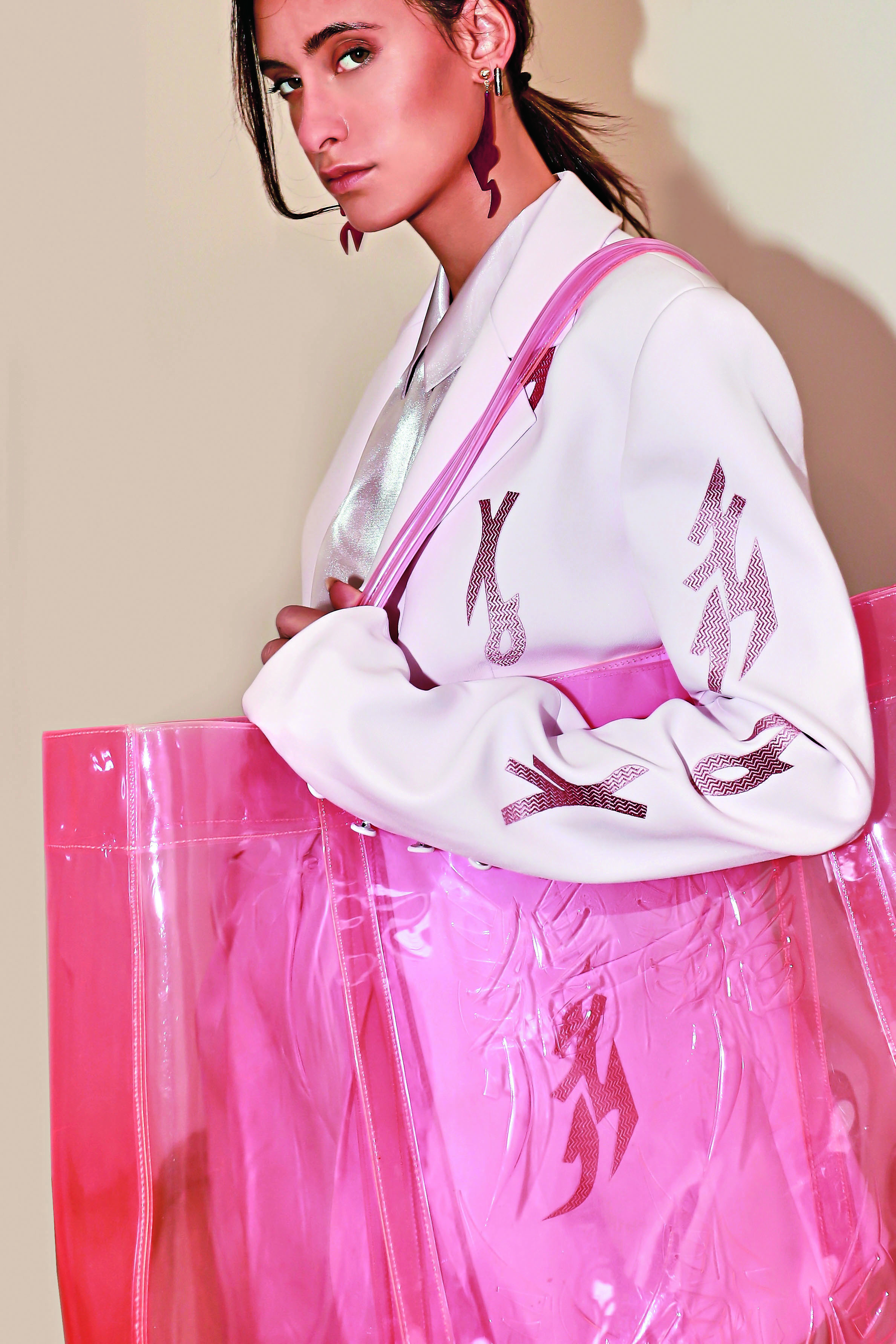
During the 2022 Milan Fashion Week (MFW, from February 23-27), many of the models, who wore fashionable dresses integrated with traditional Chinese cultural elements, caught the eyes of numerous viewers during the "golden week." The dresses resulted from many Chinese designers' hard work. In addition to drawing inspiration from traditional Chinese culture, the designers put a lot of effort into creating fashionable dresses integrated with modern, international artistic elements.
As one of the most influential international fashion events, MFW has always attracted worldwide attention. No wonder the MFW 2022 was in the spotlight, and the focus of many media outlets. The Hui clothing, a well-recognized brand-name line of women's fashionable clothing, was especially eye-catching. Zhao Huizhou is the founder and creative director behind the Shenzhen (a city in South China's Guangdong Province)-based brand, which made its 10th MFW outing this year.
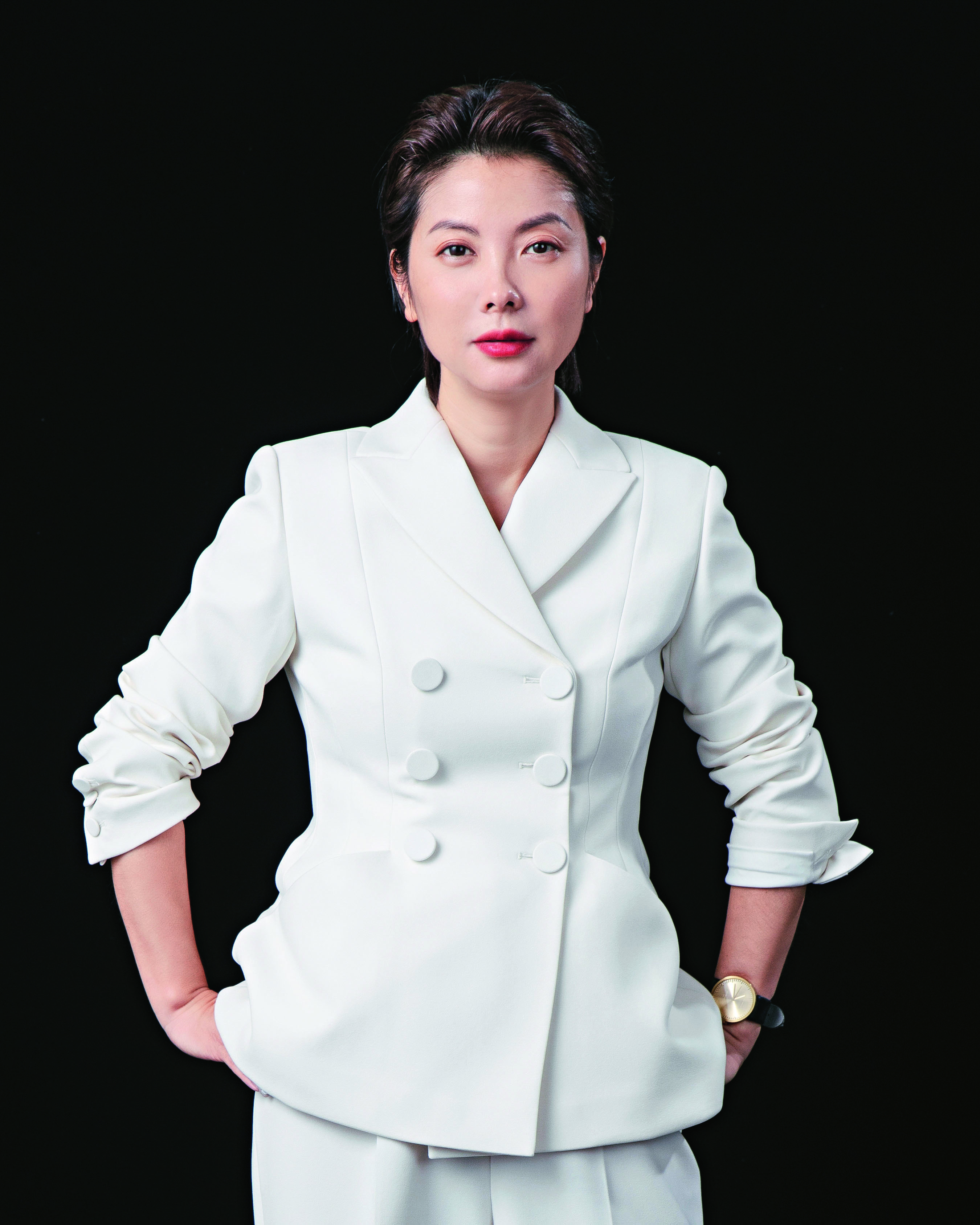 |
| Zhao Huizhou, founder of Eachway Fashion Group, has many international and national design awards under her belt. In 2016, she established Hui Fund, to promote the inheritance and innovation of China's intangible cultural heritage. In 2019, Zhao was named a National March 8th Red-Banner Holder. |
'Trying to Find Something That I Want to Express'
Zhao was nervous when she participated in MFW for the first time, in September 2015. Why? She feared the Western fashion community might not appreciate her team's original fashion designs, integrated with international artistic elements and elements of China's intangible cultural heritage. To her pleasant surprise, the Hui clothing immediately caught the attention of people around the world.
"Since then, I've been trying to find something that I want to express (through my fashions), something that not only showcases the unique charm of traditional Chinese culture, but also attracts the world's attention," says Zhao.
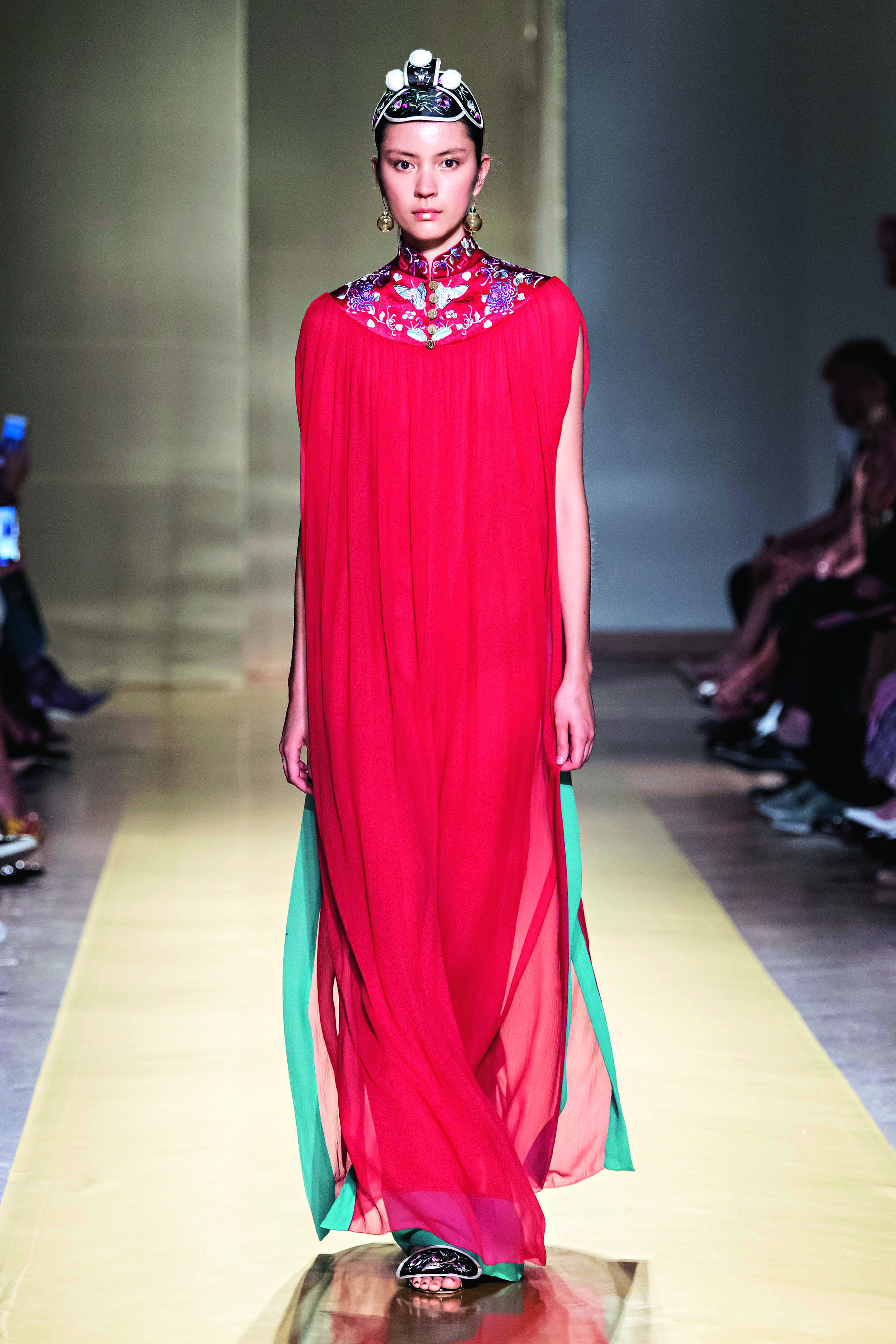
If you see the colorful clothes and adornments, created by Zhao and her team, during the MFW (in September 2019, with the theme of Chinese Legend), you will surely be fascinated by the items' unique artistic charms. The craft (making the clothes and adornments) is integrated with the Beijing-, Yi- and Miao-styled embroidering skills.
During MFW in February 2021, Zhao's team paid homage to the shadow play, by creating clothing integrated with the play's elements. Shadow play, also known as shadow puppetry, is one of the world's oldest forms of folk plays. While they tell stories, puppeteers manipulate the figurines, made from donkey hide, cowhide or paperboard, behind a translucent cloth screen. China's craft of making shadow puppets was added to the list of UNESCO (United Nations Educational, Scientific and Cultural Organization)'s intangible cultural heritage in 2011.
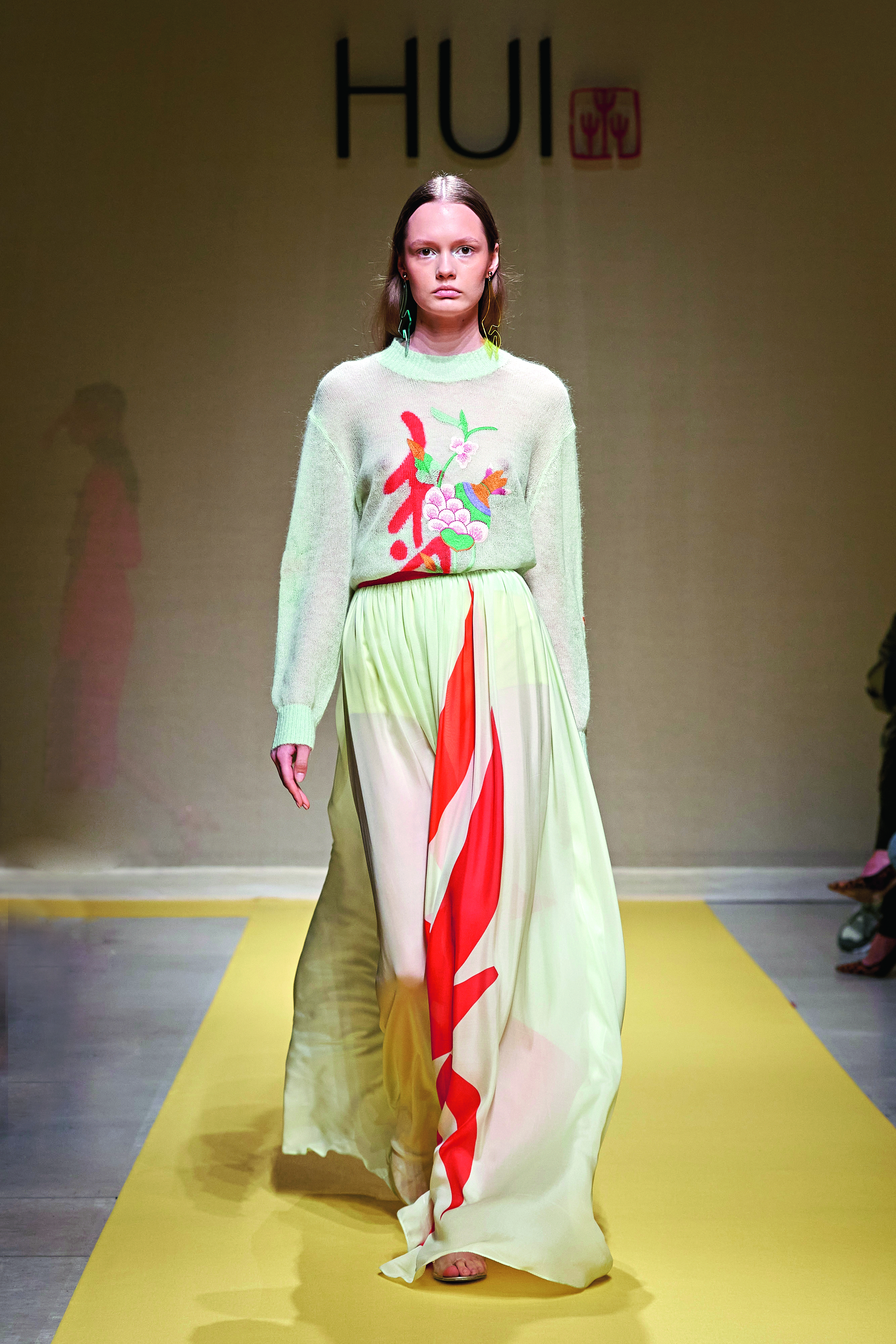
Affected by the novel coronavirus epidemic, the Hui clothing was shown via the online platform of the National Chamber of Italian Fashion (a non-profit making association which promotes the development of Italian Fashion). In the digital film, models wore outfits with the elements (of costumes of traditional Chinese operas' performers), including straight collars and buttons to the right. In addition to Western vintage wool clothing, viewers were able to appreciate the beauty of Peking Opera headgear, and Chinese silk and embroideries.
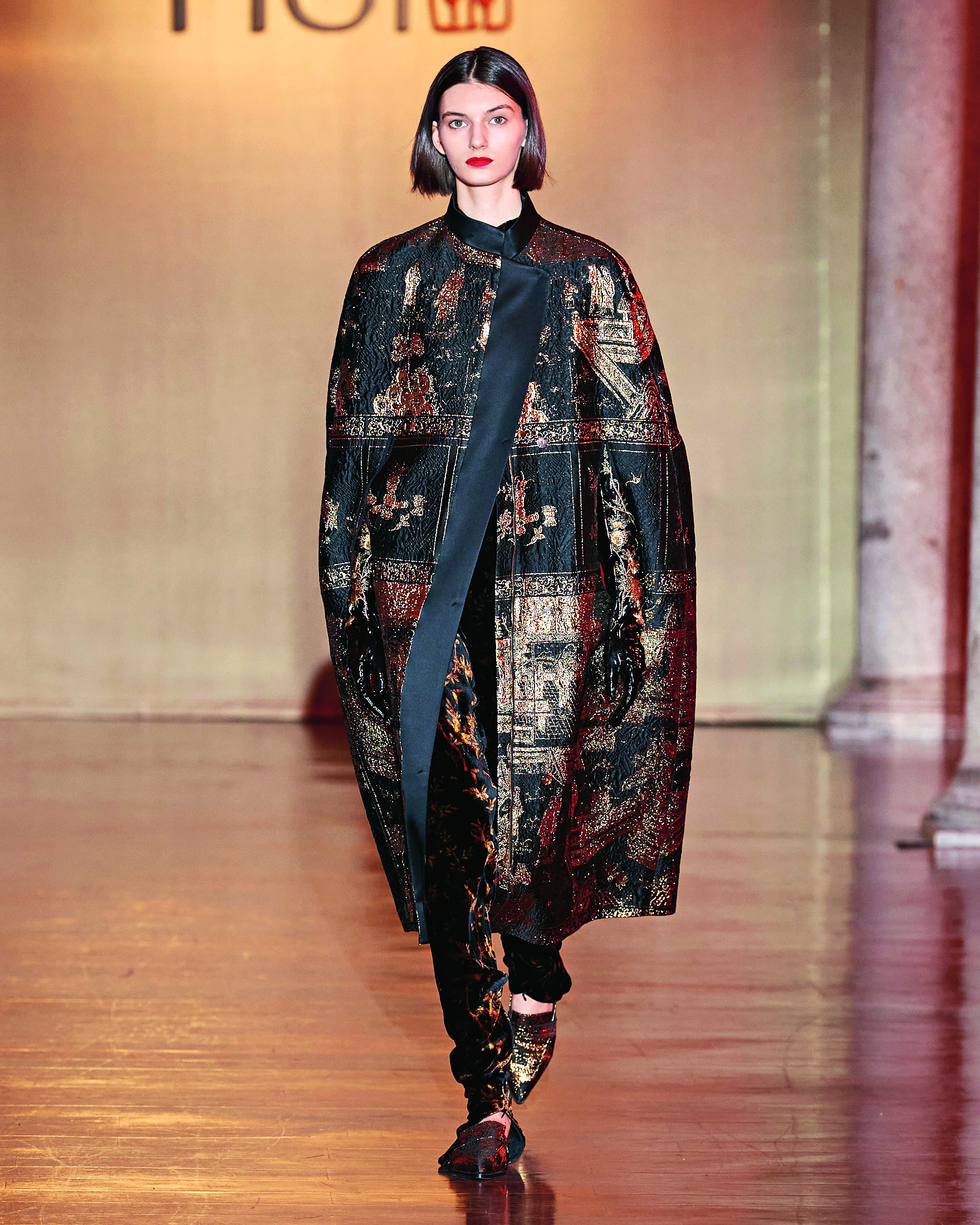
During MFW in September 2021, viewers from around the world were impressed by the fashionable dresses and handbags (designed by Zhao and her team's members), with embroidered and/or printed patterns of Nüshu letters. Nüshu, or "women's writing" in Chinese, is a kind of script designed and used exclusively by rural women in Jiangyong (a county in Central China's Hunan Province) during ancient times. Nüshu is a rhomboid variant derived from square Chinese characters to record the local dialect in Jiangyong. The characters are structured by four kinds of strokes — dots, horizontals, verticals and arcs. The elongated letters are written with very fine and thread-like lines, which resemble women's slim, beautiful figures. As a unique "cultural fossil," Nüshu is important for the study of linguistics, grammatology, archeology, anthropology and other human and social sciences. In 2005, Nüshu was added to the Guinness World Records, as the Most Gender Specific Language. In 2006, the State Council, the Chinese Government's cabinet, added Nüshu to its list of national intangible cultural heritage.
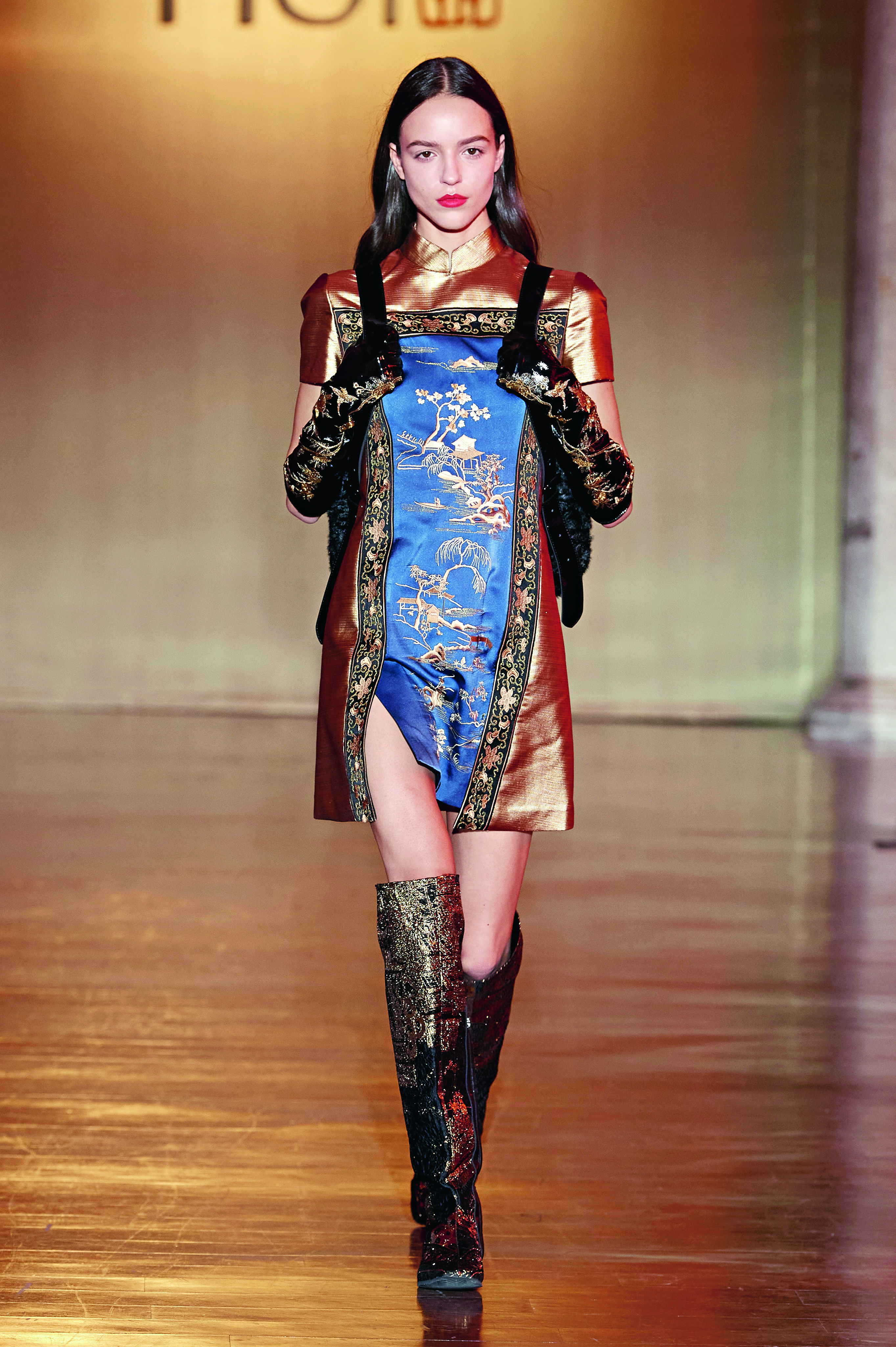
'Better Express Oriental Temperament'
"I've been exploring internationally accepted ways to better express Oriental temperament," says Zhao. To this end, she and her team have chosen fragrant tea and colorful lanterns, as "props," to set off the elegance and beauty of "ancient Chinese women" during MFW in recent years. Zhao has also led her team in using the skills required to make various traditional Chinese crafts (including silver ornaments and Miao-styled embroideries), as they have created fashionable clothes and adornments. To cater to the aesthetic tastes of modern people, the designers have simplified the patterns of the traditional crafts, and they have changed excessively strong colors into simple, elegant ones, so viewers from around the world might perceive the charm of Oriental aesthetics through the Hui clothing.
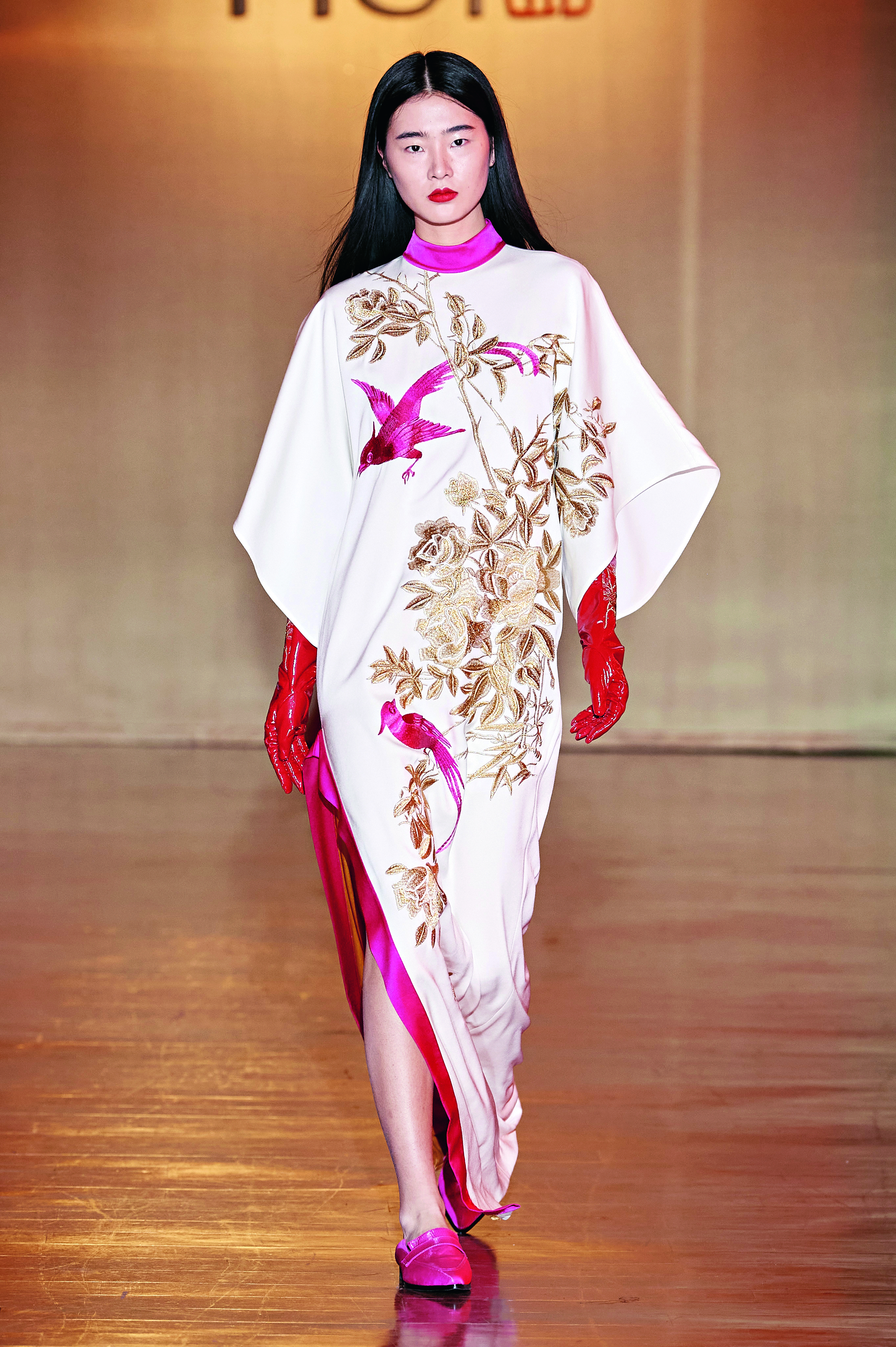
During the 2022 MFW, models, who wore fashionable Hui clothing, were on the catwalk in Leonardo Da Vinci National Museum of Science and Technology (in Milan). Several artworks of Da Vinci (1452-1519), a world-renowned master of art, are housed in the museum. Da Vinci was a polymath, having been a scientist, artist, engineer and inventor.
During the MFW, Zhao's team chose traditional Chinese screens (room dividers), as "props," to set off women's elegance and beauty. The unique art form (screen), created by Chinese more than 4,000 years ago, is an "enchanting flower" of traditional Chinese culture.
Arianna Fontana, an Italian sportswoman who competed during the Beijing 2022 Olympic Winter Games (held in February), helped promote the Hui clothing during the MFW. Fontana defended her Olympic women's short track speed skating 500m title in Beijing.
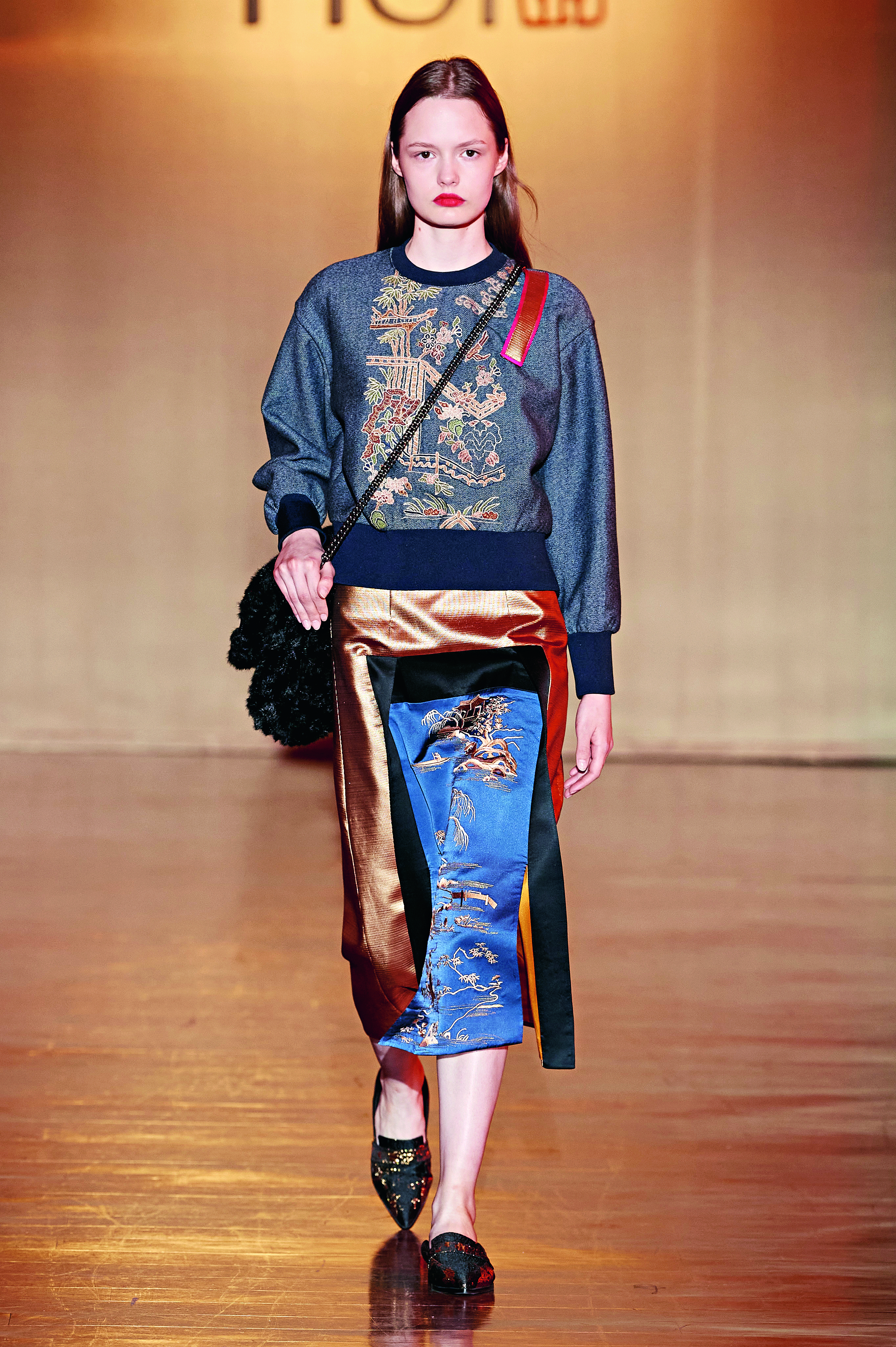
Zhao loves screens. She has a painted wooden screen in her office. "We are bold in using various colors (including black gold, rose red and navy blue) to design Oriental screens, decorated with Western artistic patterns," says Zhao. She adds the peaceful space behind the screen symbolizes women's private space.
During the past decade, Zhao and other fashion designers have made persevering efforts to realize their dreams of creating beautiful dresses for women, so they can display the charm of the dresses to the world. By drawing inspiration from traditional Chinese culture, the designers have created enchanting, gorgeous clothes and adornments, which are nothing less than superb works of art. Given the ingenious designs and the exquisite workmanship, an increasing number of people, the world over, have become fascinated with the Chinese-designed clothes and adornments.
Photos Supplied by Interviewees
(Women of China English Monthly April 2022 issue)
Please understand that womenofchina.cn,a non-profit, information-communication website, cannot reach every writer before using articles and images. For copyright issues, please contact us by emailing: website@womenofchina.cn. The articles published and opinions expressed on this website represent the opinions of writers and are not necessarily shared by womenofchina.cn.

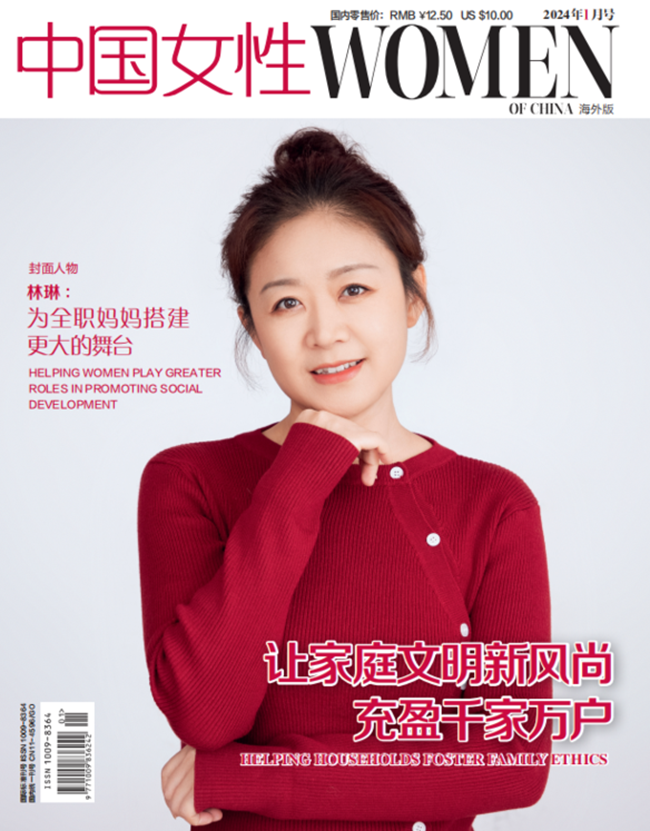
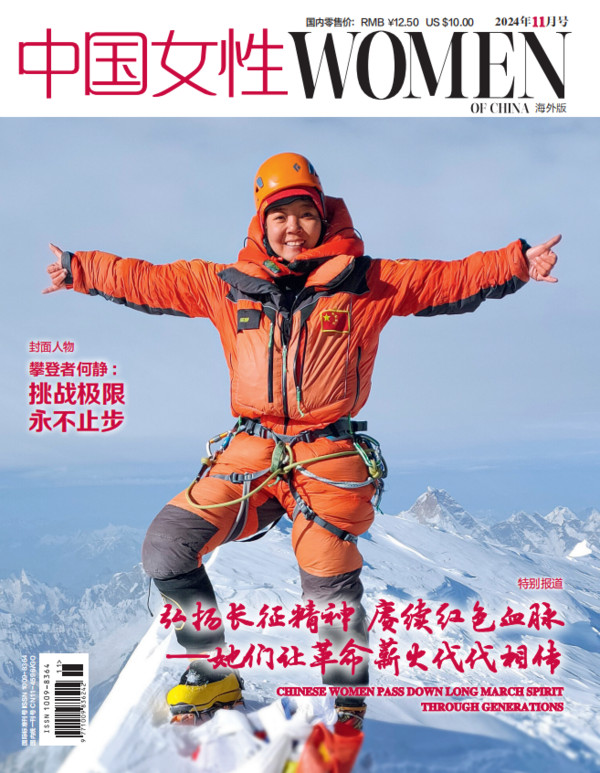

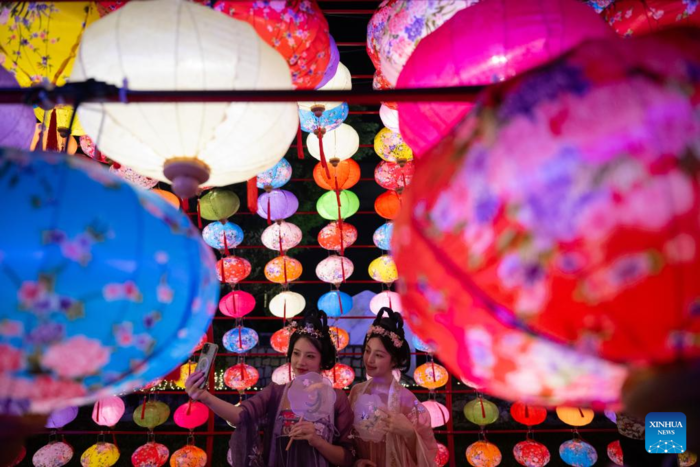
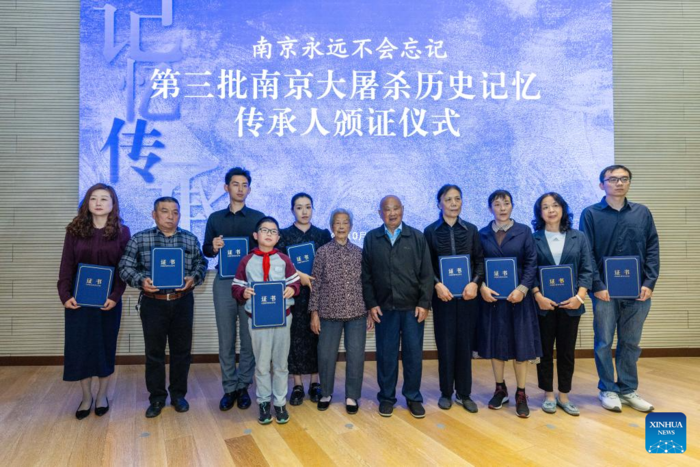
.jpg)

 WeChat
WeChat Weibo
Weibo 京公网安备 11010102004314号
京公网安备 11010102004314号